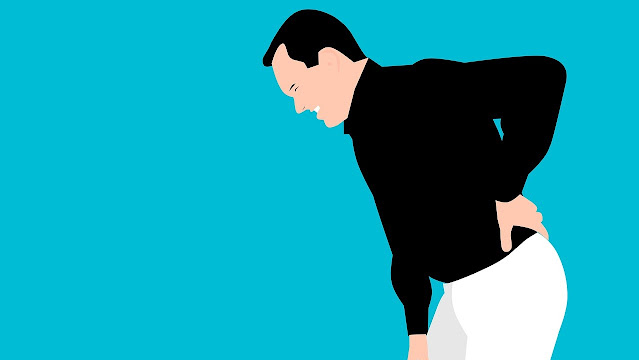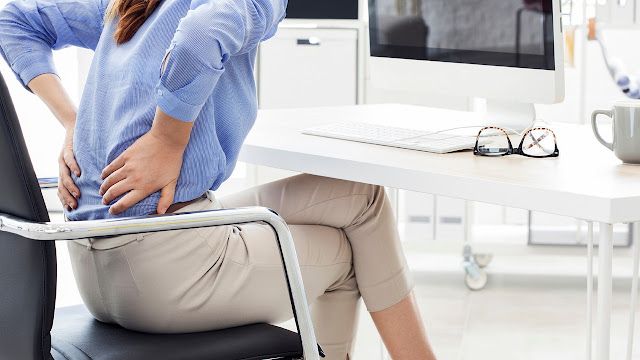What age does back pain start
Back pain can start at any age, although it is more common as people get older. Studies show that approximately 80% of adults will experience back pain at some point in their lives.
Back pain can be caused by a variety of factors, including poor posture, lack of regular exercise, obesity, aging, injury, or medical conditions like arthritis, osteoporosis, and herniated discs. Some of these factors may be more likely to occur as people get older, which may contribute to the increased incidence of back pain in older adults.
It’s important to note that not all back pain is related to age. Younger people can experience back pain as a result of poor posture, overuse or injury, or medical conditions. Additionally, people of any age can take steps to prevent back pain by maintaining a healthy lifestyle, including regular exercise, good posture, and a balanced diet. If you experience persistent or severe back pain, it’s important to consult with a healthcare provider to determine the underlying cause and the best course of treatment.
Who can get back pain
Back pain can affect people of all ages and can be caused by a variety of factors, including:
Inactivity or lack of regular exercise
Obesity or being overweight
Aging and degenerative changes in the spine
Genetics and family history
Injury, trauma, or overuse
Anyone can experience back pain, but certain factors may increase the risk of developing it. For example, people who have jobs that require heavy lifting, prolonged sitting, or repetitive bending and twisting may be more prone to back pain. Additionally, people with certain medical conditions or who smoke may also be more likely to experience back pain.
It’s important to maintain a healthy lifestyle, including regular exercise, good posture, and a balanced diet, to help prevent back pain. If you do experience back pain, be sure to consult with a healthcare provider to determine the underlying cause and the best course of treatment.
Back pain symptoms
Back pain can present in many different ways, depending on the underlying cause and the severity of the pain. Some common symptoms of reverse pain include :-
Dull, aching pain :- Back pain can often feel like a dull, constant ache in the lower back. The pain may be mild or severe and may be aggravated by movement.
Sharp pain :- Some people experience sharp, shooting pain in the back. This type of pain may be more severe and may be triggered by sudden movements or changes in position.
Stiffness :- Back pain can also cause stiffness or reduced range of motion in the back. You may have difficulty bending or twisting, and may feel like your back is “locked up”.
Tingling or numbness :- In some cases, back pain may be accompanied by tingling or numbness in the back, legs, or feet. This may be a sign of nerve involvement.
Weakness :- Back pain can also cause weakness in the legs, making it difficult to stand, walk, or climb stairs.
Pain that worsens with certain activities :- Back pain may be aggravated by certain activities, such as prolonged sitting, bending, or lifting heavy objects.
Limited mobility :- Severe back pain can limit your ability to perform routine activities, such as getting dressed or taking a shower.
It’s important to consult with a healthcare provider if you experience persistent or severe back pain, especially if you have any other symptoms like fever, unexplained weight loss, or difficulty urinating, as these may be signs of a more serious underlying condition.
Read also :- Know 7 side effects of papaya so that you are safe
What are 10 benefits of carrots 11
Back pain how to manage this problem
There are several ways to manage back pain, depending on the cause and severity of the pain. Then are some ways that may help :-
Rest :– Avoid activities that exacerbate the pain and take a break to rest your back. However, prolonged bed rest is not recommended and can make the pain worse.
Exercise :- Regular exercise can help strengthen the muscles that support the spine and improve flexibility. Low-impact exercises like walking, swimming, and yoga can be particularly helpful.
Heat or Cold Therapy :- Applying heat or cold to the pain area can help reduce pain and inflammation. Try using a heating pad, warm towel, or taking a warm bath, or apply an ice pack or cold compress.
Pain Medication :- However, consult with a healthcare provider before taking any medication, especially if you have other health conditions or are taking other medications.
Physical Therapy :- A physical therapist can work with you to develop an exercise and stretching program to help alleviate pain and improve mobility.
Mind-Body Techniques :- Mind-body techniques like relaxation, meditation, and deep breathing can help reduce stress and tension, which can contribute to back pain.
Massage or Chiropractic Care :- Massage therapy or chiropractic care can help reduce pain and improve range of motion. However, always consult with a healthcare provider before seeking these types of treatments.
5 gentle stretches that can help ease lower back pain
Here are 5 gentle stretches that can help ease lower back pain :-
Knee- to- casket Stretch :- Lie on your reverse with your knees fraudulent and bases flat on the bottom. Gently bring one knee to your chest and hold it with both hands for 15-30 seconds. Repeat with the other leg.
Cat-cow stretch :- Start on your hands and knees, then alternate between arching your back and rounding it. Inhale as you arch your revers, and exhale as you round it. Repeat for 5-10 repetitions.
Child’s Pose :- Start on your hands and knees, then sit back onto your heels and reach your arms forward. Rest your forehead on the floor and hold for 30-60 seconds.
Figure four stretch :- Lie on your back with your knees bent and feet flat on the floor. Cross one ankle over the opposite knee, then gently pull the uncrossed leg toward your chest until you feel a stretch in your hip and glute. Hold for 20-30 seconds, then release and repeat with the other leg.
Pelvic cock :- taradiddle on your reverse with your knees fraudulent and bases flat on the bottom. Strain your abdominal muscles and cock your pelvis overhead, pressing your lower reverse into the bottom. Hold for 5- 10 seconds, also release and repeat for 5- 10 reiterations.
Remember to listen to your body and stop any stretches that cause pain or discomfort. These stretches can be done daily to help alleviate lower back pain, but it’s always a good idea to check with a healthcare provider before starting any new exercise routine.

